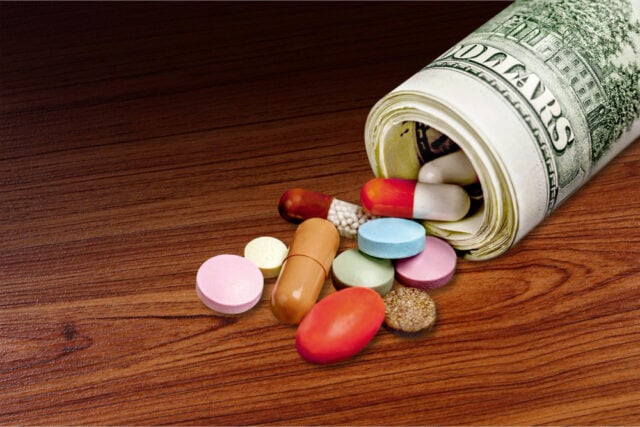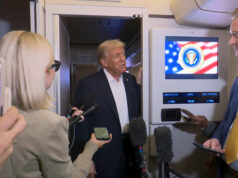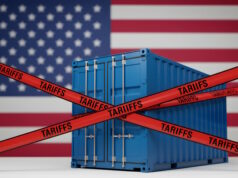
The Trump administration is launching a pressure campaign against prescription drugmakers in an effort to get them to lower prices for everyday Americans.
President Donald Trump sent letters to at least 17 major drugmakers, including AstraZeneca, Eli Lilly, Johnson & Johnson and Pfizer, and posted them publicly on his social media site Truth Social Thursday.
In the letters, Trump gave the pharmaceutical firms until Sept. 29 to make a series of commitments that aim to provide “immediate relief from the vastly inflated drug prices and put an end to the free ride of American innovation by European and other developed nations.”
The letters by the president ratcheted up the rhetoric toward drugmakers by directly demanding that specific companies start providing Americans with “the lowest price offered in other developed nations,” a pricing approach also known as the “most favored nation” model.
“There is no reason American consumers should pay exorbitantly more than other countries for the same drug in the same packaging and manufactured in the same factory,” the White House said in a statement Monday.
Trump’s recent statements are the latest attempt by his administration to lower drug prices using the president’s executive power. Meanwhile, experts are beginning to question if that unilateral approach is the most effective way to meaningfully lower the cost of drugs.
“Drug companies may respond to pressure tactics of the sort that President Trump is using,” Juliette Cubanski, deputy director of Medicare policy at the nonprofit KFF, says in an email to Money. “But that response is unlikely to be substantially reducing drug prices across the board.”
On the other hand, Chris Meekins, a health care policy analyst at Raymond James, told Barron’s on Thursday that despite the rhetoric, the letters could actually be backpedaling on demands made by Trump’s executive order on drug prices, signed in May.
“Originally, he said the U.S. will get the best price that any other nation gets for all products,” Meekins says. “Now he’s carving out specific categories.”
Trump’s demands to lower drug prices
The letters Trump addressed directly to the heads of 17 pharmaceutical companies include four key demands.
- The drugmakers must provide their full portfolio of existing drugs at the lowest price offered to other similar nations — aka the most-favored-nation price — to all patients on Medicaid, the government’s health care plan for low-income and disabled Americans.
- For all newly developed drugs, the companies must contract with the federal government to provide all Americans, whether they have public or private health insurance — with the most-favored-nation price.
- Trump ordered the pharmaceutical companies to negotiate with other countries in coordination with the U.S. in order to “return increased revenues abroad to American patients and taxpayers.”
- Drugmakers were ordered to develop direct-to-consumer and direct-to-business drug sales models that effectively eliminate middleman drug management companies that mark up prices.
Trump said he expects the companies to engage with his administration “immediately, and in good faith,” to meet the demands by Sept. 29. The letters also suggest that the initial negotiations with drugmakers following his May executive order did not go as intended.
“Most proposals my Administration has received to ‘resolve’ this critical issue promised more of the same,” Trump wrote, “shifting blame and requesting policy changes that would result in billions of dollars in hands out to [the] industry.”
If the companies don’t comply, the president threatened to “deploy every tool in our arsenal” to get them to lower drug prices.
PhRMA, a pharmaceutical industry trade group, strongly opposes the so-called most-favored-nation approach, saying that it would be a “bad deal for American patients and workers” that could threaten American innovation.
Can Trump actually make drug companies lower prices?
In the U.S., prescription drug prices are uniquely high, especially for brand-name drugs. According to KFF, the popular weight-loss drug Ozempic, for example, is over 10 times pricier here than in some peer countries.
The monthly list price for Ozempic in the U.S. is $936, KFF says. The second most expensive country in the analysis is Japan, where it costs $169. In Sweden, the U.K., Australia and France, it’s under $100.
Zooming out, Americans spent about $100 billion out-of-pocket for their prescriptions last year, a record high. Regardless of political affiliation, exorbitant drug prices are a major issue. According to a separate KFF report, 73% of Americans say there isn’t enough regulation on the price of prescription drugs.
Enter Trump’s renewed push to lower drug prices. They follow several initiatives by the Biden administration to do the same. At the start of the year, for example, a $2,000 annual out-of-pocket drug price cap went into effect for Medicare Part D beneficiaries as part of former President Joe Biden’s Inflation Reduction Act. That law also allowed for Medicare to negotiate prices with drugmakers, for the first time ever, on select high-cost drugs.
Those negotiated prices are slated to go into effect in 2026 with additional drug negotiations underway.
In April, Trump signed an executive order seeking to expand those negotiations while encouraging the production of cheaper, generic equivalents of high-cost, name-brand medications. Then came his May order and August letters advocating for “most-favored-nation” pricing.
Trump told reporters Sunday that his efforts have dramatically lowered drug prices already.
“You know, we’ve cut drug prices by 1,200, 1,300, 1,400, 1,500%,” Trump said, without providing evidence. “I don’t mean 50%, I mean 14, 1,500%.” (Mathematically, prices can’t drop by more than 100%.)
Despite both Biden’s and Trump’s efforts, annual prescription costs rose 1.2% as of June, according to the Labor Department.
As a result of Trump’s pressure, Cubanski, with KFF, says some manufacturers have indeed made new commitments to invest in American production of prescription drugs or introduced new options for consumers to purchase drugs directly rather than going through insurers or other middlemen. But so far, she adds, these changes aren’t broad-based solutions to the plight of high drug prices in the U.S.
She says if lowering prices were as easy as ordering drug companies to lower them through pressure or executive action, it probably would have already been done.
“Without concerted legislative action,” she says, ”we may not see the systemic price reductions that President Trump is pushing for.“
Disclaimer
The information contained in South Florida Reporter is for general information purposes only.
The South Florida Reporter assumes no responsibility for errors or omissions in the contents of the Service.
In no event shall the South Florida Reporter be liable for any special, direct, indirect, consequential, or incidental damages or any damages whatsoever, whether in an action of contract, negligence or other tort, arising out of or in connection with the use of the Service or the contents of the Service. The Company reserves the right to make additions, deletions, or modifications to the contents of the Service at any time without prior notice.
The Company does not warrant that the Service is free of viruses or other harmful components
This article originally appeared here and was republished with permission.












